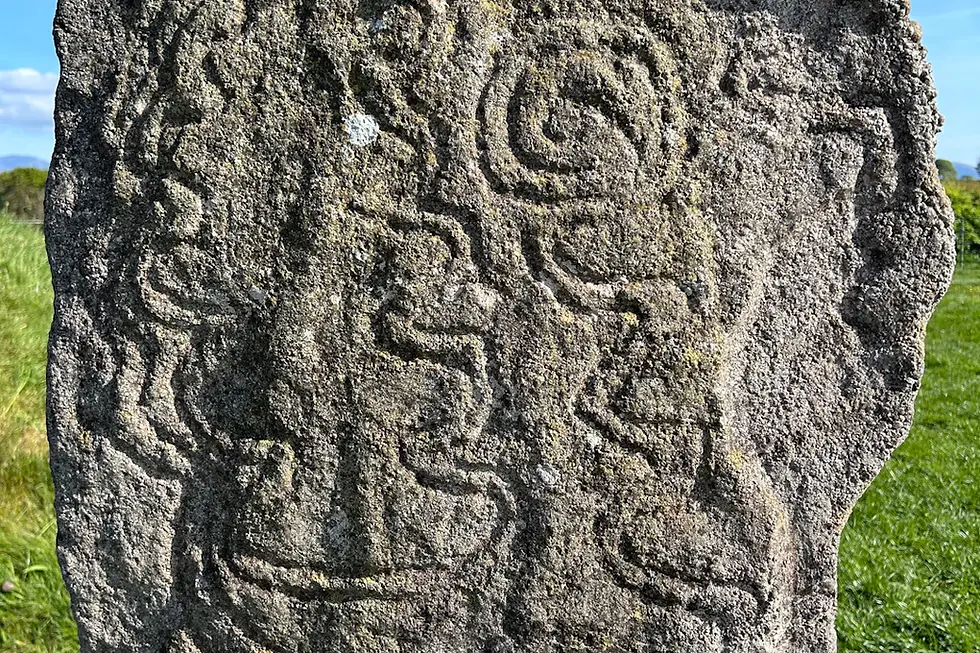The Intersection of Art and Knowledge in Ancient Societies
- Sep 19
- 5 min read

The creativity and intellectual pursuits of ancient civilizations are often regarded as the cornerstones of contemporary thought and artistic expression. From the intricately painted walls of Egyptian tombs to the philosophical musings of ancient Greek thinkers, art and knowledge were inseparably linked in the tapestry of history. In this blog post, we explore how these two realms intersected nourished culture, innovation, and the enduring legacy of ancient societies.
The Role of Art in Communication and Knowledge Preservation
In ancient societies, art served multiple purposes beyond mere decoration. It was a vital medium for communication that conveyed beliefs, traditions, and stories from generation to generation. This section will delve into how art functioned as a means of knowledge preservation and dissemination.
Art as Historical Record
Cave Paintings and Early Civilizations: The earliest forms of art, such as cave paintings, were used by prehistoric societies to document their surroundings, hunting practices, and spiritual beliefs. These images narrate stories, educate younger generations, and provide us with valuable insights into their daily lives.
Pictographs and Hieroglyphics: In cultures such as Ancient Egypt and Mesopotamia, writing systems like hieroglyphics and cuneiform were developed not just for record-keeping but also as a form of artistic expression. These symbols and inscriptions adorned temples and monuments, serving as both art and an archive of knowledge.
Mythology and Iconography
Mythical narratives often found expression through artistic representation. Deities, heroes, and legendary events were depicted in sculptures, pottery, and murals. This not only conveyed the values and beliefs of a culture but also served as a repository of its knowledge systems.
Greek Mythology: In ancient Greece, artists illustrated tales of gods and goddesses on vases and sculptures, which not only beautified their surroundings but also educated the populace about their myths and moral lessons.
Religious Art in the Indus Valley: The incorporation of religious motifs in ancient art reflects deeply rooted spiritual beliefs, revealing the intertwined nature of art, culture, and theology.
The Conduits of Knowledge in Artistic Practices
Art had a hand in shaping and challenging existing knowledge practices. In this section, we will explore how the mediums of art fostered intellectual discourse and informed societal structures.
Influence of Patronage
Patronage played a crucial role in the artistic production of ancient societies. Rulers and wealthy elites commissioned artworks as a display of power, culture, and knowledge.
Roman Emperors: In Rome, emperors employed artists to create grand statues and monuments that reinforced their authority. These artworks often carried inscriptions that conveyed the political ideologies of their time.
Royal Courts of China: In ancient China, the promotion of arts by emperors not only elevated the status of artists but allowed for the collaboration of scholars and craftsmen, merging literature, philosophy, and visual art.
Art as an Educational Tool
Art was not merely an aesthetic endeavor; it also served educational purposes that penetrated the walls of schools and families alike.
Rhetoric and Oratory: In ancient Greece, the art of rhetoric was fundamental in public speaking. An artist’s ability to present knowledge visually helped to engage an audience and effectively convey complex ideas.
Interactive Art: In ancient Persia, storytelling through theater and dance was instrumental in transferring knowledge and culture. These performances captivated audiences and enhanced understanding through entertainment.
Philosophical Engagement with Art
Ancient philosophers often engaged deeply with the nature of art and knowledge. This section explores the philosophical dialogues that shaped perceptions and interpretations of art in ancient societies.
Plato and the Theory of Forms
Plato’s notions on art reflect a critical examination of its value and nature. Though he was skeptical of art's ability to convey truth, he acknowledged its capacity to represent the ideal forms.
Art as Imitation: For Plato, art was an imitation of the truth, and understanding this imitation was essential in the pursuit of knowledge through philosophical inquiry.
The Republic: In his work “The Republic,” Plato discusses the role of art within a just society and its potential to either uplift or mislead the citizenry.
Aristotle’s View on Art and Ethics
In contrast, Aristotle celebrated art, particularly drama, as a mechanism for achieving catharsis, providing insight into ethical dilemmas and human emotions.
Art as Experience: For Aristotle, art offered a reflective experience, allowing individuals to engage with moral complexities reflective of societal issues.
Influence on Education: His perspective emphasized the importance of integrating art into education, advocating for its role in developing critical thinking and empathy.
Influence on Technology and Science
The intersection of art and knowledge significantly influenced advancements in technology and scientific inquiry in ancient societies.
Architectural Marvels
The architectural feats of ancient civilizations remain a testament to the synergy of artistic expression and scientific knowledge.
The Pyramids of Egypt: The design and construction of pyramids demonstrate an advanced understanding of mathematics and engineering coupled with aesthetic vision.
Roman Aqueducts: The innovative water management systems of Rome exemplify how artistic principles were applied in engineering, facilitating knowledge transfer across civilizations.
Textiles and Craftsmanship
The craftsmanship of textiles in ancient cultures not only served functional purposes but also reflected the societies' values, beliefs, and advancements.
Andean Textiles: In ancient South America, textiles conveyed social status, ecological knowledge, and historical narratives through intricate patterns and dyeing techniques.
Silk Road Exchange: The exchange of artistic styles and craftsmanship techniques along the Silk Road exemplified how art facilitated the spread of knowledge across cultures.
The Legacy of Art and Knowledge Interconnection
As we dig deeper into the historical corridors of ancient societies, it becomes evident that the conjunction of art and knowledge shaped not only their civilizations but also laid the groundwork for future generations' cultural and intellectual pursuits.
Revival in the Renaissance
The reinvigoration of classical knowledge during the Renaissance highlights the enduring impact of the intersection between art and knowledge from ancient times.
Humanism: The focus on human experience and emotion in art echoed the philosophies of ancient Greece and Rome, prompting a revival of interest in intellectual studies.
Scientific Illustrations: Renaissance artists like Leonardo da Vinci melded art with science, contributing to advancements in anatomy and perspective that would influence generations of thinkers and artists.
Modern Implications
Today, the legacies of ancient societies persist. Understanding the interplay between art and knowledge allows modern creators to appreciate the foundational aspects of their work. Artists, scientists, and educators look to the past to inspire innovation and explore new frontiers of human experience.
The Ever-Evolving Dance of Creativity and Understanding
As we reflect on the rich connections between art and knowledge within ancient societies, it serves as a poignant reminder of the transformative impact that creativity can have on the understanding of our world. This interconnectedness not only inspires us to explore our own creative avenues but also encourages a deeper appreciation for the vast tapestry of human history and intellect. So, as we continue to engage with both art and knowledge, let us leave space for thoughtful dialogue, inspiration, and a collective pursuit of learning that transcends time.
FAQs
What is the main theme of the blog article?
The main theme of the blog article is the intersection of art and knowledge in ancient societies and how these two realms were intertwined to nourish culture, innovation, and the legacy of these civilizations.
How did art function in ancient societies?
In ancient societies, art served multiple purposes, including communication of beliefs and traditions, preservation and dissemination of knowledge, and functioning as a historical record.
What role did patronage play in ancient art?
Patronage played a crucial role in ancient art production, as rulers and elites commissioned artworks to display power and culture while reinforcing social and political ideologies.
How did philosophers like Plato and Aristotle view art?
Plato was skeptical of art's ability to convey truth, seeing it as imitation, while Aristotle celebrated art as a mechanism for understanding ethical dilemmas and fostering critical thinking.
What is the significance of the Renaissance in relation to art and knowledge?
The Renaissance highlighted the revival of classical knowledge and humanism, emphasizing the interconnectedness of art and knowledge, and saw artists like Leonardo da Vinci merge artistic expression with scientific inquiry.




Comments